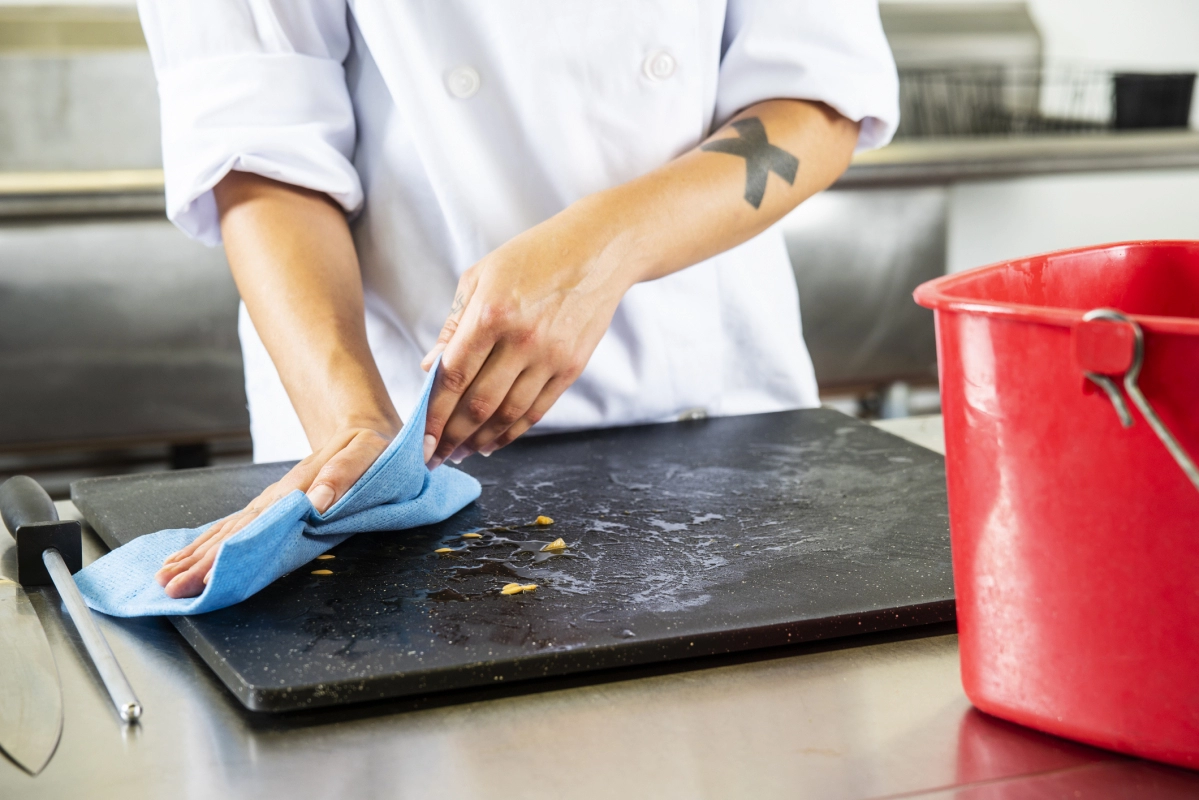
Summertime Al Fresco Cooking Safety Guide
If your restaurant has an outdoor patio there is nothing more enjoyable for your guests than dining al fresco.
Add an outdoor cooking station to the mix and your clientele can also enjoy watching your talented chefs prepare their meals.
But summer’s warm humid temperatures are perfect conditions for bacterial growth – making it the perfect breeding ground for foodborne illnesses. The Government of Canada estimates that there are 4 million cases of foodborne illness each year, but with a few simple safety tips your outdoor patio can be a safe, delicious place for your guests to dine and enjoy the beautiful Canadian summer and fall.
Keep it Safe
Always use separate utensils, cutting boards and food containers for raw and cooked foods to prevent cross contamination.
Package your raw meats and poultry securely in leak-proof plastic bags or airtight containers to avoid cross contamination and place them at the bottom of your fridge or cooler to prevent juices from dripping onto other foods.
Insects are definitely another concern for patio food preparation. Make sure foods are kept covered to keep pests from contaminating them.
Keep It Cold
Keep cold food cold, at or below 4°C (40°F) until you are ready to begin cooking.
Use an insulated cooler with freezer packs or blocks of ice to store perishable foods. Keep your cooler in a shady spot out of direct sunlight.
Alternatively, keeping your perishables in a refrigerator (if you have access to one) will keep them at a safe temperature.
Keep fridge doors closed as much as possible or, if using a cooler, ensure any perishable foods that are left in your cooler are disposed of once the freezer packs thaw or ice has melted.
Make sure food (including sauces and salad dressings) does not sit out in the summer sun too long. Two hours is the maximum but “When in doubt, throw it out.”
Keep It Hot
If you plan to cook food ahead of service make sure you have a hot holding cabinet or chafing dish to maintain a temperature of 60 Celsius or above.
Cook foods thoroughly to kill harmful bacteria. Don’t guess – check when meat and poultry are safe to eat by inserting a digital instant-read food thermometer into the thickest part of the food. Serve cooked food while it’s still hot and don’t let foods sit in the “danger zone” where bacteria can grow quickly. The “danger zone” is any temperature between 4°C (40°F) and 60°C (140°F).
A list of safe temperatures for cooked foods can be found here.
Keep It Clean
Hygiene is critical for safe food handling and preparation.
Always wash your hands and make sure you have a hand washing station available. There are many portable, affordable options available depending on your needs.
Always clean cooking surfaces and utensils well with soap and hot water before and after you handle food, especially raw meat, poultry or seafood, or raw vegetables and fruit. You can use a mild bleach and water solution (5 ml of bleach per 750 ml of water) to sanitize counter tops, cutting boards and utensils. Make a fresh batch every day and check it with a sanitizer test strip.
Be sure to wash all produce (including vegetables, fruit and fresh herbs) under cool running water before eating or cooking.
Keep It Enjoyable
With just these few simple safeguards, your guests will be able to enjoy a safe and memorable dining experience on your outdoor patio, the type that they will want to return to over and over.
For more information about the online and in-class food safety training offered by the experts at Food Safety Market, visit the enroll page here.

